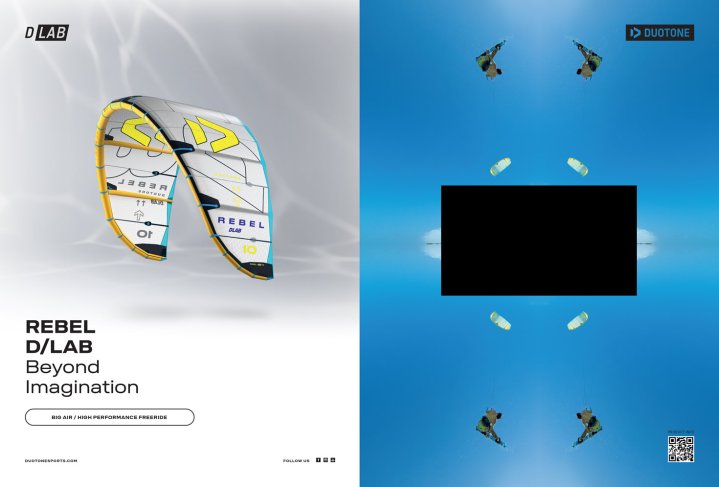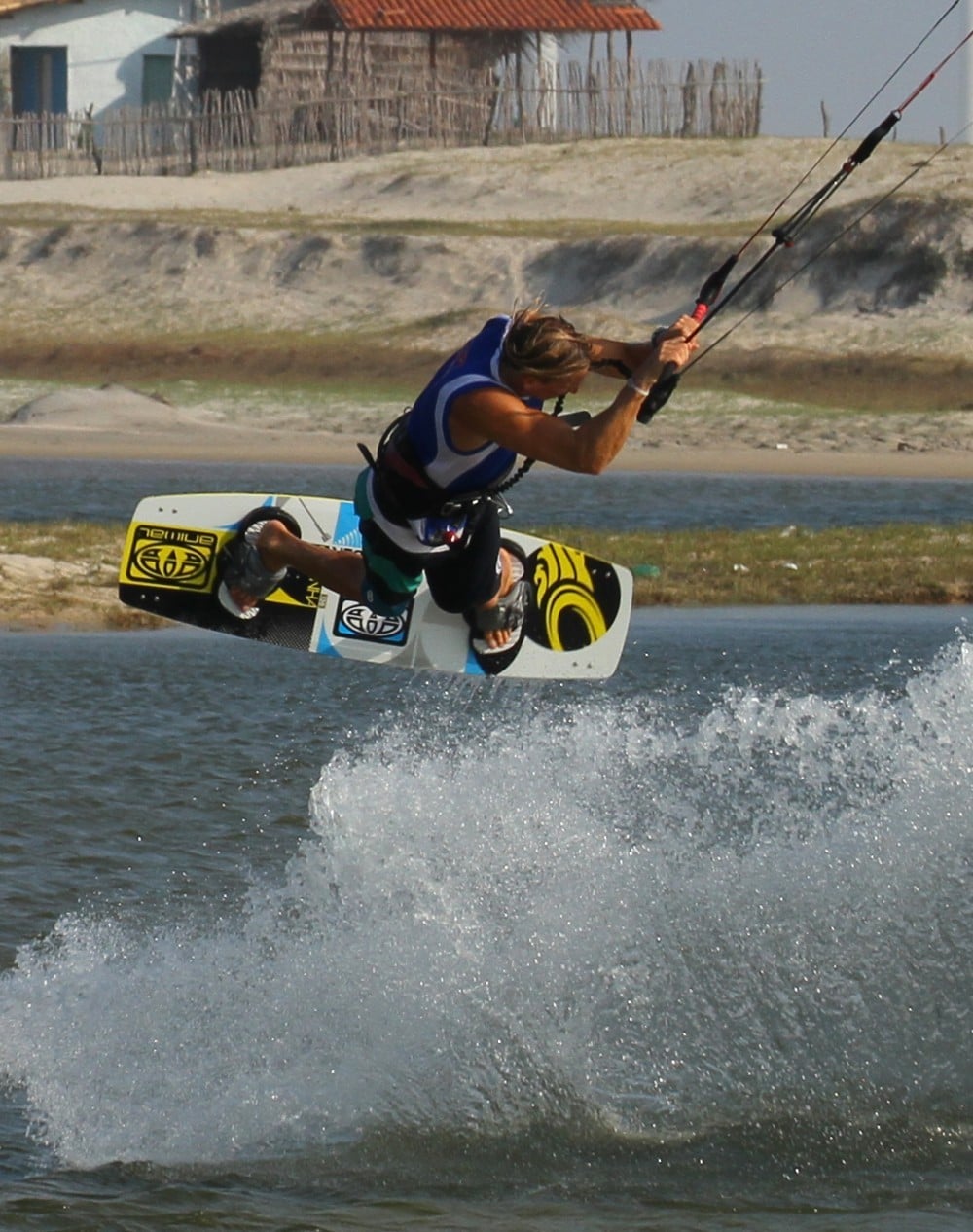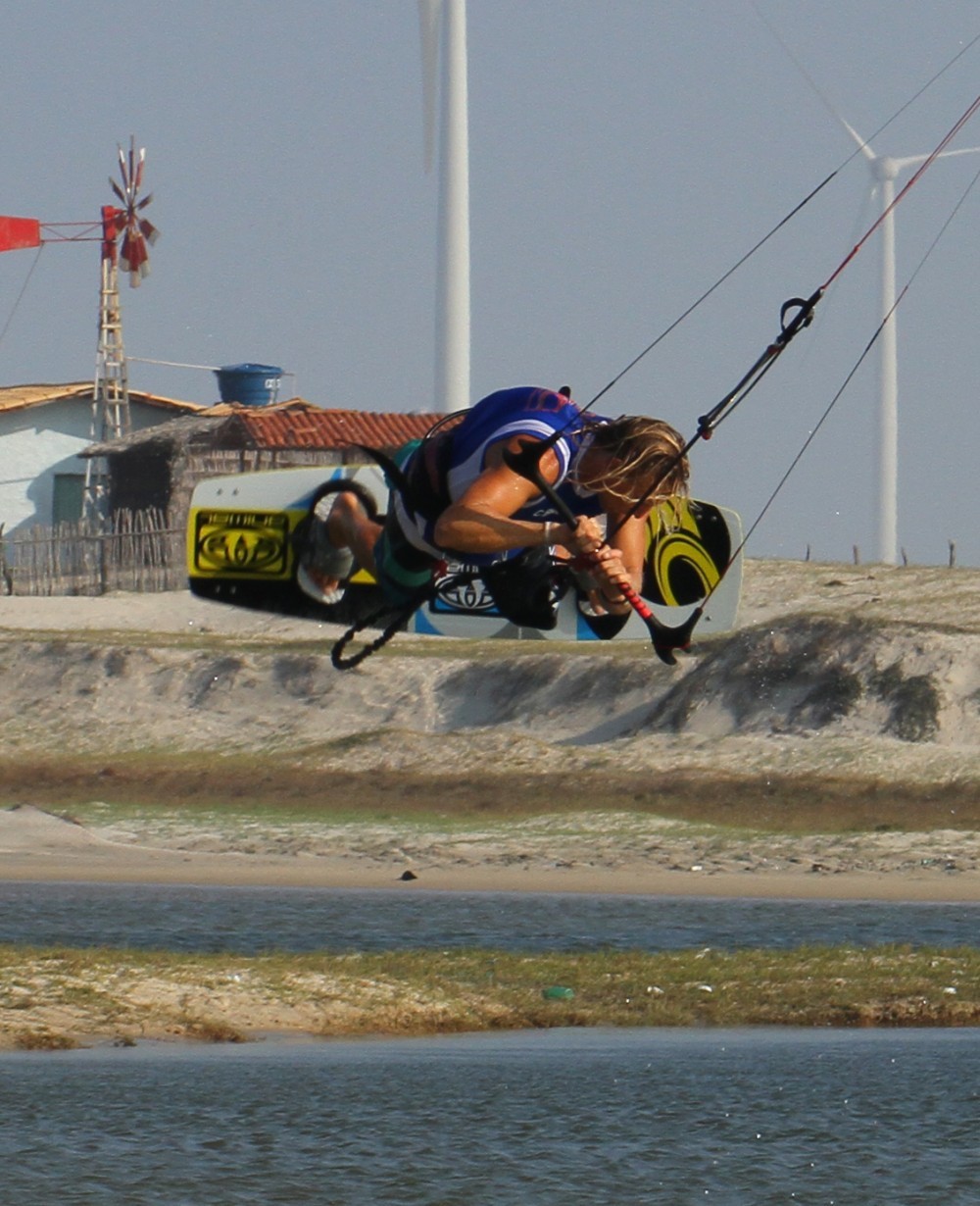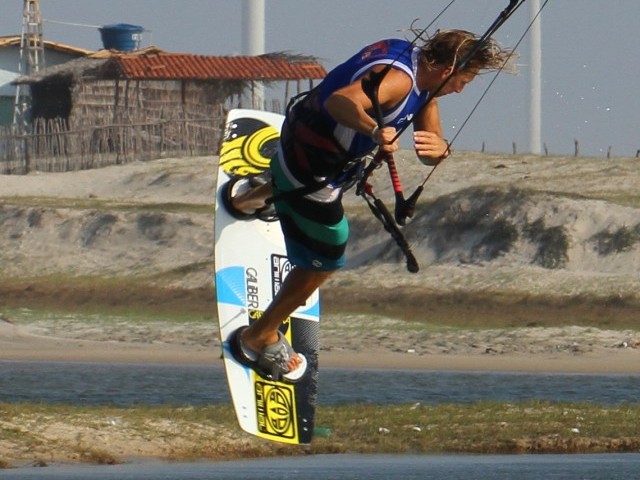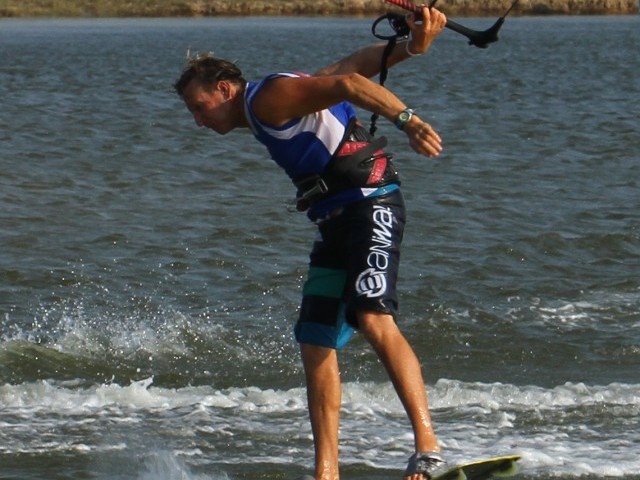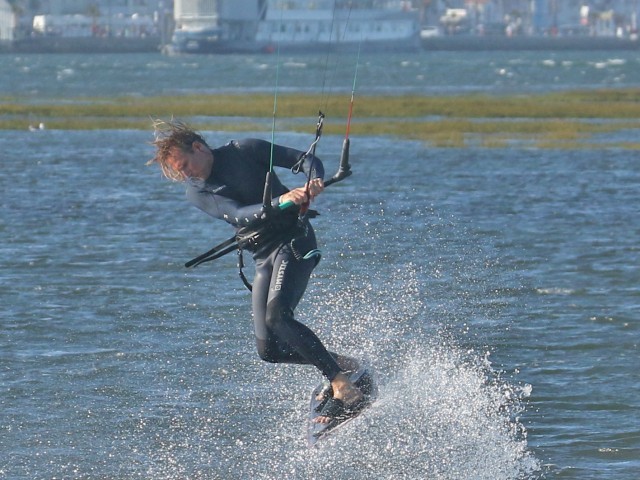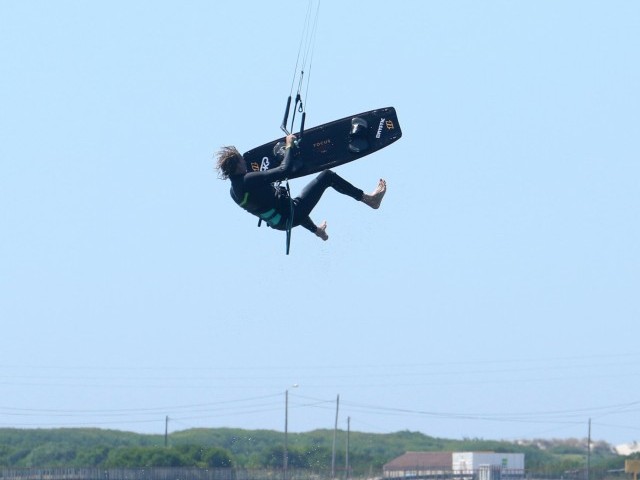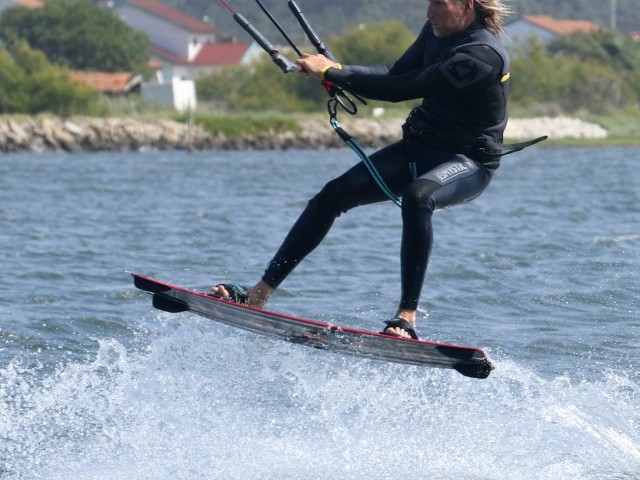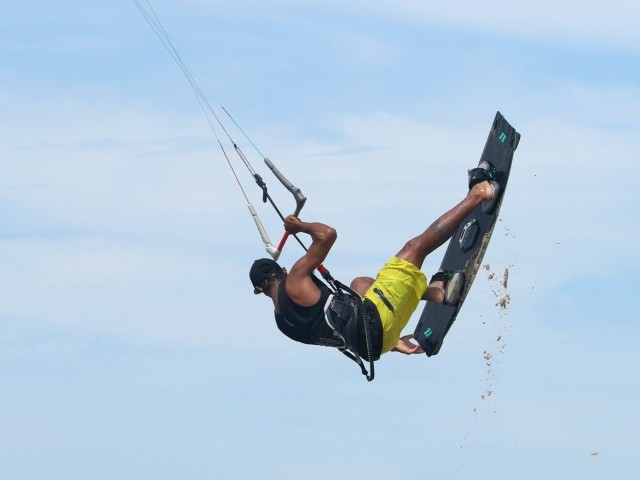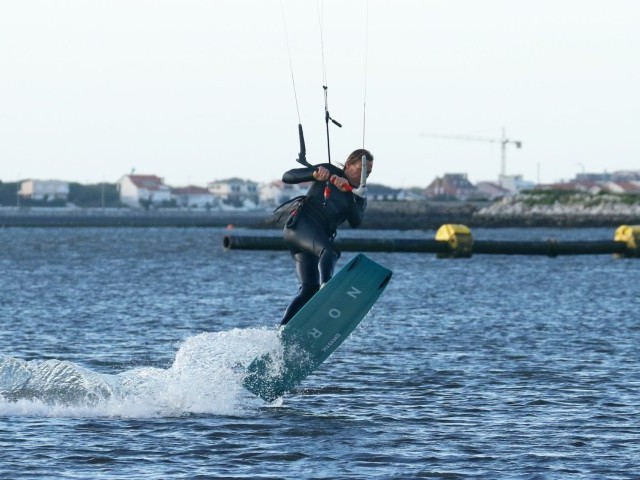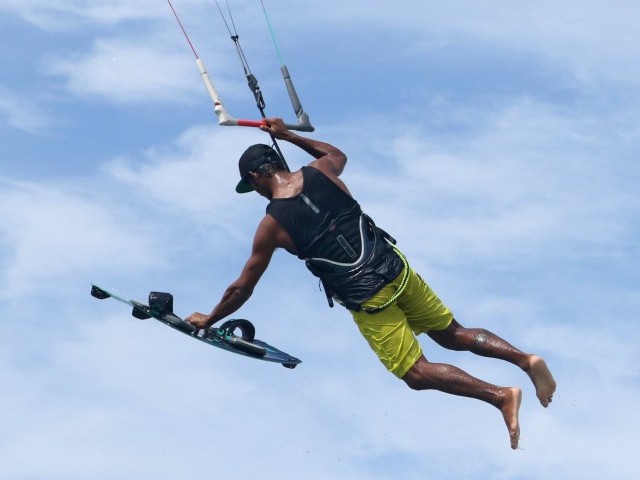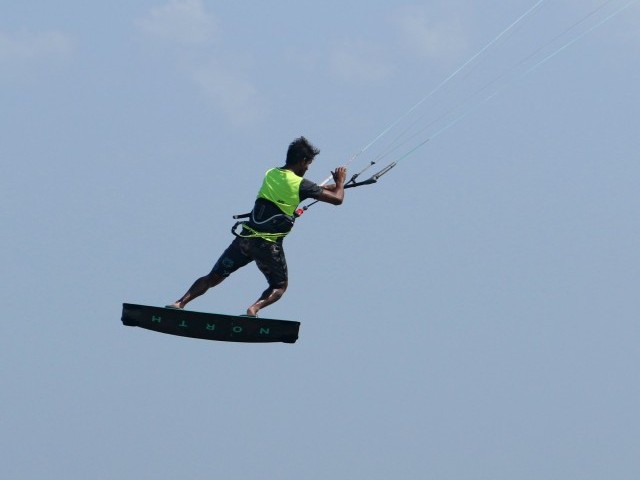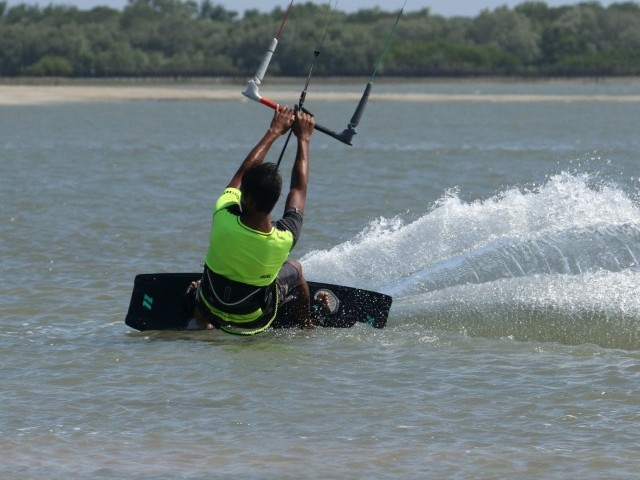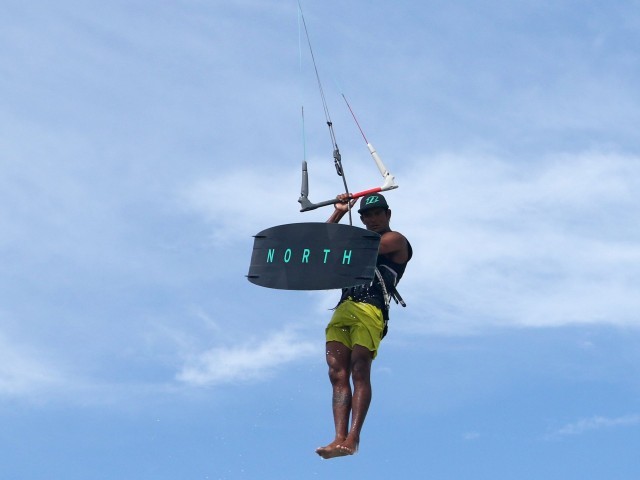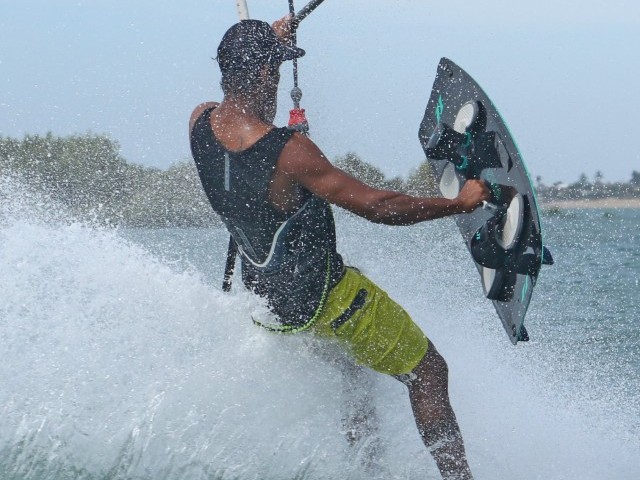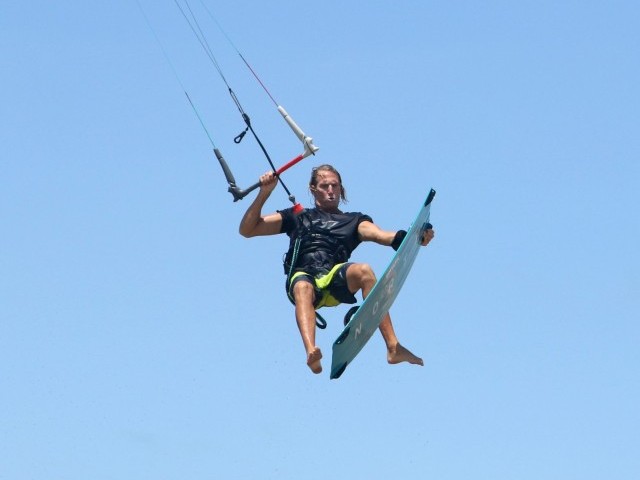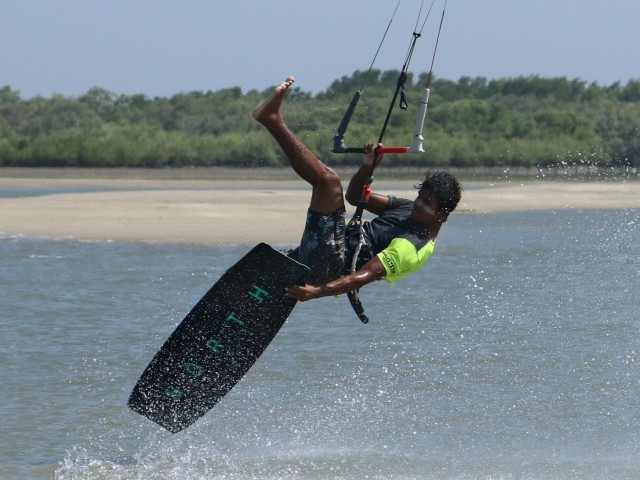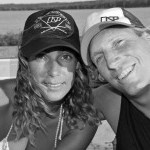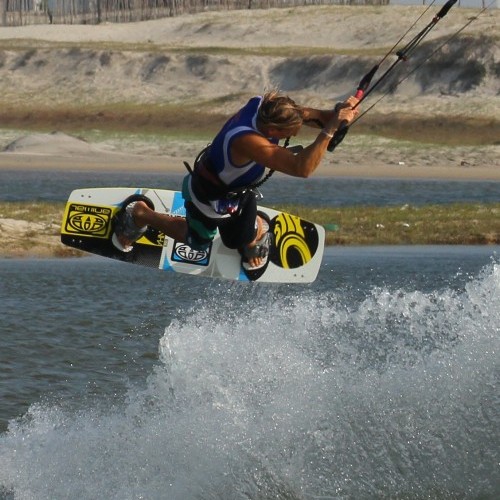
S-Bend to Blind
Technique / Advanced
Introduction
Throwing a decent S-Bend and then stomping it to blind is always going to look tasty. Best bet before you tackle this is at least to have your Raley to Blind sorted, and it’ll make it even more achievable to nail the front to blind first too. That said if you want it to be the real deal, your S-Bend is what’ll make this look good, with the blind landing being the cherry, on the icing, on the cake.
Getting all the pop that you can, whilst controlling your height, to get the board up and high will require some effort! So concentrate on approaching with your kite around, at best a bit above 45˚, which will help get the board up. The approach is everything to good pop, so keep your shoulders behind your hips whilst unhooking and your weight over the tail of the board. Your back leg should be flexed ready to explode but not bent and soft – this way you can still resist and keep the board between you and the kite for maximum pop. Even though the aim is to rotate forward you’ll need to edge just as hard as you would for a Raley so that the board flicks up behind you extending your front leg. From this position, throwing your head and shoulders down and round should equal S-Bend.
Pic A
This clearly shows how Christian has turned the board up into the wind and underneath him before kicking hard against his back foot. The result is the board flicking around, following through, straightening and pulling his front leg out as soon as he kicks off. With this action he is still able to throw his head and shoulders down to initiate the rotation whilst his legs and lower body stretch out and rise. Keeping your arms slightly bent will keep you closer to the bar and enable you to spin quicker and pull the bar harder. From here his upper body will be leading with his feet and board following high behind.
Pic B
Stage two! Being an S-Bend your aim is to finish your front rotation with your feet still high and behind you. Looking at the picture you can see that the beauty here is that Christian is in a familiar position, almost that of a raley. From here, throwing the blind requires the same skills. The only difference is that you won’t have a huge amount of time to spot your landing, as you’ll be facing the wrong way most the way around your rotation, and then have a split second to focus before turning your head again. Also you can see that because Christian kept his arms in and slightly bent at take off, as he comes around he is not only close to the bar but over it, and therefore won’t be pulled out of position by the kite.
Pic C
To throw the blind Christian has pulled hard on both hands to bring the bar nearer. By pulling on the both hands Christian not only moves towards the bar but just as importantly the bar will not pivot, and so the kite will not move. At the same time Christian swings his front leg forwards and down towards the bar, so that the board will drop beneath him and not be left upwind of him on landing! The commitment to blind is topped off with Christian turning his head and shoulders back to allow his entire body to turn enough for an incident free landing.
Pic D
To succeed in flicking the board up into a claimable S-Bend will have required a respectable amount of speed, and certainly a bit of power in the kite. The down side to this is that you will be coming in to land “lit” or as we say understatingly over here, rather quickly. This means that you need to be ready to take the landing. Probably the most singularly important part of this image is the direction in which Christian is travelling to land – almost down wind.
To achieve this he had to bear away a lot before take off (where you start is where you finish), and throw an extreme blind, pulling his board through and twisting his arm around behind him, which allows his shoulders, him and therefore board to turn as much as possible. With the board travelling downwind there is little chance of catching an edge, and even if Christian loses balance he can carve either toe side or heel side to save him self. Final point here is to get your weight over the board, so you land down on it. You can see that Christian has extended his legs and that his shoulders and head are over the board. This way the board will not bounce off the tail, bury the nose, or stop on an edge and Christian can absorb the impact.
Top Tips
Working up to this incrementally is definitely the way forward, and is infinitely preferable to a balls to the wall approach. First attempts you should concentrate on good pop and a solid landing, and then as your confidence and skill improve, start to delay the rotation and concentrate more on the board flick and S-bend. Finally once you are fully confident add some extra power and speed for the ultimate in self-satisfaction.
Following Sequence 1 from right to left
- Pic 1. With his kite just above 45˚, good speed and comfortable power Christian bears off the wind with his weight back and then cuts hard upwind with all his might.
- Pic 2. As the board turns up underneath him Christian kicks hard against his back foot, popping hard and keeping his elbows in.
- Pic 3. With the board flicking around and behind him, Christian then throws his head and front shoulder down to initiate his front spin.
- Pic 4. Rotating fast Christian leaves his legs outstretched to slow the board down.
- Pic 5. Whilst leading with his head, hands and shoulders, Christian looks over his shoulders, waiting to see the water and spot his landing.
- Pic 6. As Christian comes around he keeps his arms in, some pressure on the front hand to stop the kite rising and see the water.
- Pic 7. Now in the same position as if he was coming out of a raley, Christian pulls both hands in hard towards him.
- Pic 8. Swinging his front leg forward towards the bar, Christian releases his back hand and turns his head back.
- Pic 9. Committed to the blind, he twists his arm behind his back, palm up, which allows his upper body to turn even further.
- Pic 10. Having turned all the way so that the board is now facing downwind Christian lands over the board.
- Pic 11. In this position he can take the landing, and once balanced pass the bar.
Common Problems
The most common problem with this move, assuming that the spin is fast enough will be not getting the board underneath you and your weight over it. The most likely reason for this will be that rather than pulling to blind as you complete your rotation, you are just continuing your rotation and trying to guestimate your height so that you land blind. With the extra speed of an S-Bend this will be far more difficult. To avoid this really look over your shoulder, so that when you know you are coming around, you can time your pull.
If you find that you are bouncing out on landing, the chances are you bending too much at the waist as you throw the blind. This results in you turning off axis and means that you will land heavily on the tail of the board. As it digs in, it will then pop back up, bouncing you out of position and tipping you in. To avoid this keep you chin and head up as you commit to the blind.
Finally if you catch your heel side edge and fall onto your back! Either you don’t have enough height and therefore time to get through both movements, which can be a result of too little pop or having the kite below 45˚. Or it is likely that you are not pulling hard enough with both hands. If you pull gently and release your back hand, the bar will not be light and you will therefore dive the kite with your front hand as you turn your back on it. This extra pull of a diving or down looping kite will pull you over and down wind of the board, and you’ll catch the edge as a result.
Keystones
- Cut hard with weight low
- Front leg flick
- Rotate with head, hands and shoulders
- Look for landing to time pull, knee and throw
- Land upright over down wind board
This technique article was in Issue 33 of IKSURFMAG.
Related
By Christian and Karine
Christian and Karine have been working together as a coaching team, running improver to advanced kitesurfing clinics since 2003.




